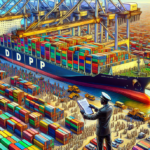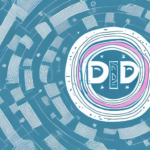Introduction to DAP and DDP: Navigating Digital Commerce Platforms
In the rapidly evolving landscape of digital commerce, businesses must choose the right platform to effectively sell their products and services online. Whether you're an established enterprise or a budding startup, selecting between DAP (Digital Access Pass) and DDP (Digital Product Delivery) can significantly impact your success. This comprehensive comparison explores the key differences, advantages, and considerations to help you make an informed decision.
Understanding DAP and DDP: Core Functionalities
What is DAP?
DAP, or Digital Access Pass, is a platform primarily designed for selling membership plans, protected content, and digital courses. It offers robust features for managing memberships, including drip content, member forums, and advanced content protection. DAP's one-time software license fee provides long-term value for businesses focused on subscription-based models.
What is DDP?
DDP, or Digital Product Delivery, specializes in selling digital products such as eBooks, software, and digital downloads. It operates on a monthly fee structure based on the number of products sold, making it scalable for businesses with varying product inventories. DDP excels in automated delivery systems, real-time download tracking, and integration with third-party payment gateways like PayPal and Stripe.
Key Features Comparison
DAP Features
- Comprehensive membership management
- Advanced content protection
- Drip content scheduling
- Member forums and community building
- Integration with email marketing platforms
- Robust affiliate management system
DDP Features
- Automated digital product delivery
- Multiple payment gateway support
- Real-time download tracking and analytics
- Flexible pricing and product variation options
- Customizable checkout pages
- Integrated email marketing capabilities
Advantages and Disadvantages
Advantages of DAP
- Ideal for businesses offering memberships and courses
- One-time licensing fee reduces long-term costs
- Advanced membership and content management features
- Strong integration with email marketing and affiliate systems
Disadvantages of DAP
- May require technical expertise for setup and customization
- Higher upfront costs compared to subscription-based platforms
Advantages of DDP
- Scalable pricing based on product sales
- Automated delivery system enhances customer experience
- Supports multiple payment gateways for flexibility
- Customizable checkout pages improve brand consistency
Disadvantages of DDP
- Limited membership and content protection features
- Transaction fees may impact profit margins for low-priced products
- Challenges in handling complex product variations
Pricing Models: DAP vs. DDP
Choosing between DAP and DDP also depends on their pricing structures:
- DAP: One-time software license fee, providing long-term access without recurring costs.
- DDP: Monthly fees based on the number of products sold, offering scalability for growing businesses.
Both platforms offer free trials, allowing businesses to evaluate their features before committing. Additionally, support levels vary, with DAP providing email support, knowledge bases, and community forums, while DDP offers more comprehensive support, including phone assistance and dedicated account managers for larger enterprises.
Migration Considerations: Switching Between Platforms
Migrating from DAP to DDP or vice versa requires careful planning. Key factors include:
- Cost of Switching: Assess the financial implications, including potential downtime and migration fees.
- Technical Expertise: Evaluate the technical requirements and ensure your team has the necessary skills.
- Data Migration: Ensure seamless transfer of data to avoid loss of customer information or product details.
- Customer Impact: Minimize disruptions to customer experience during the transition.
- Compatibility: Verify that existing tools and integrations are compatible with the new platform.
Thoroughly reviewing these factors can ensure a smooth transition without adversely affecting your business operations.
Implementing DAP or DDP: Step-by-Step Guide
Implementing either platform involves several key steps:
- Account Setup: Sign up for an account on your chosen platform.
- Product/Membership Configuration: Set up your digital products or membership plans.
- Payment Gateway Integration: Customize and connect your preferred payment gateways.
- Email Marketing Integration: Configure email campaigns and automate communications.
- Website Integration: Connect the platform to your existing website for seamless user experience.
- Launch: Activate your store or membership site and start selling.
Beyond these steps, it's crucial to ensure high-quality offerings, conduct market research, and establish strong customer support to maximize the platform's effectiveness.
Overcoming Common Challenges
Businesses may encounter several challenges when using DAP or DDP, including:
- Integration issues with existing systems
- Limited payment gateway options
- Technical knowledge required for advanced feature setup
- Costs associated with data and customer migration
Addressing these challenges involves leveraging available support resources, investing in training, and carefully planning integrations to ensure smooth operations.
Future Prospects and Trends
Both DAP and DDP are continuously evolving to meet the demands of the digital commerce landscape. Future developments may include:
- Enhanced integration capabilities with other SaaS tools
- Improved user interfaces for better usability
- Addition of advanced analytics and reporting features
- Greater customization options for checkout experiences
- Expansion of payment gateway support
Staying updated with these advancements ensures that businesses can leverage the latest features to stay competitive.
Expert Insights: Choosing the Right Platform
Industry experts emphasize that the choice between DAP and DDP hinges on specific business needs:
- Choose DAP if:
- Your business model revolves around memberships, subscriptions, or online courses.
- Advanced content protection and member management are priorities.
- Choose DDP if:
- You focus on selling digital products with a need for automated delivery.
- Flexibility in payment gateways and scalable pricing are essential.
By aligning platform capabilities with business objectives, companies can optimize their digital sales strategies effectively.
Frequently Asked Questions (FAQs)
Which types of businesses can benefit from DAP and DDP?
Businesses that sell digital products, membership plans, online courses, and various online services can effectively utilize either DAP or DDP.
Can DDP handle membership plans?
While DDP can manage digital product sales efficiently, it lacks the comprehensive membership management and content protection features that DAP offers.
Do both platforms support multiple payment gateways?
Yes, both DAP and DDP support multiple payment gateways, including popular options like PayPal and Stripe.
What are the pricing tiers offered by DAP and DDP?
Pricing tiers for both DAP and DDP vary based on the features and functionalities required by the business. It's advisable to review each platform's pricing page for detailed information.
Are there any free trials available?
Yes, both DAP and DDP offer free trials, allowing businesses to explore and evaluate the platforms before committing to a paid plan.
Conclusion: Making the Right Choice for Your Business
Choosing between DAP and DDP depends on your business model, specific needs, and long-term goals. DAP is ideal for businesses focused on memberships and content protection, while DDP caters to those prioritizing automated digital product deliveries and flexible payment options. Carefully assess your requirements, consider the pricing structures, and leverage free trials to determine the best fit for your digital commerce strategy.






















